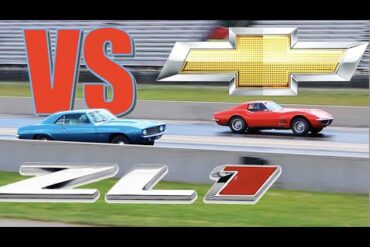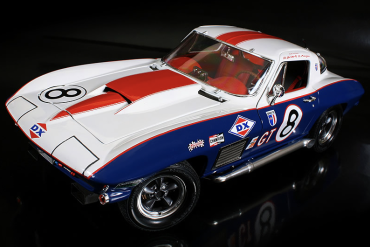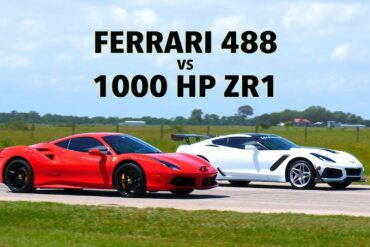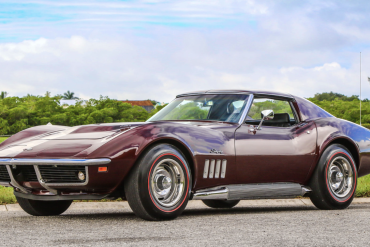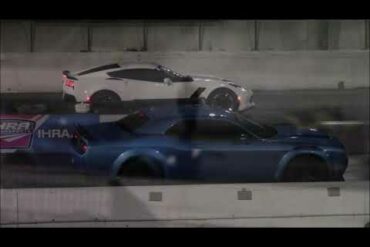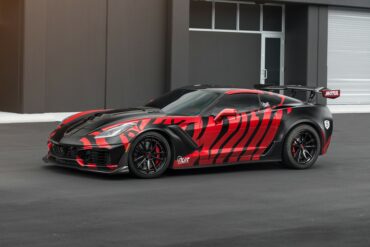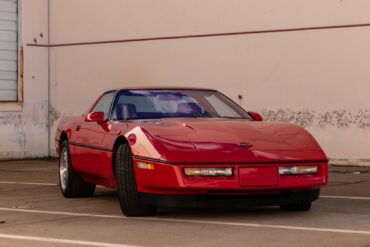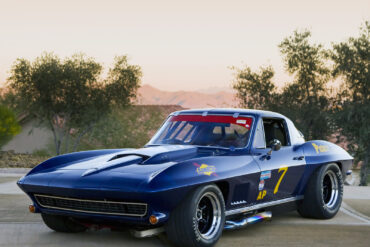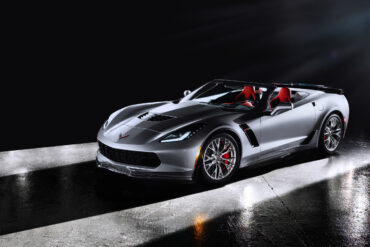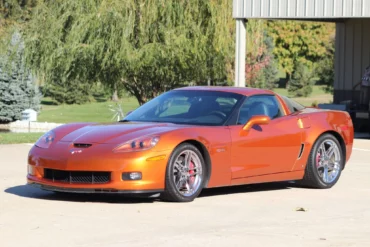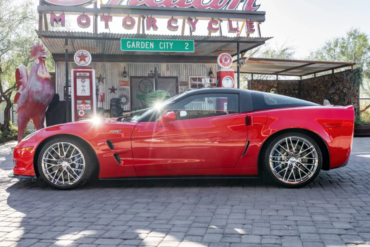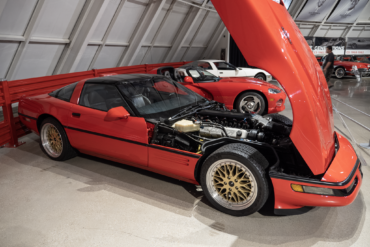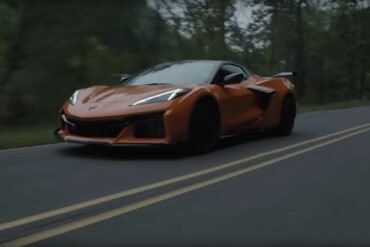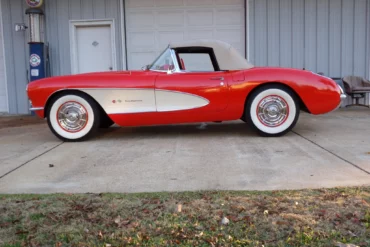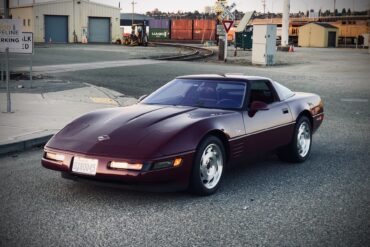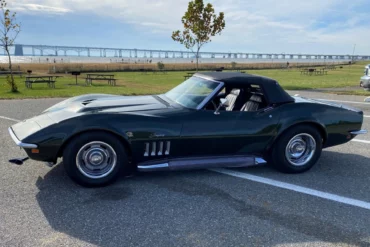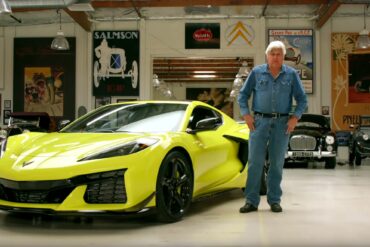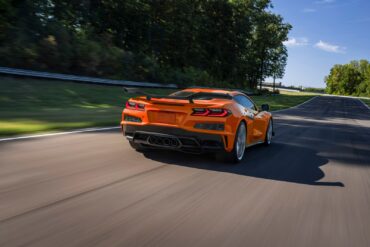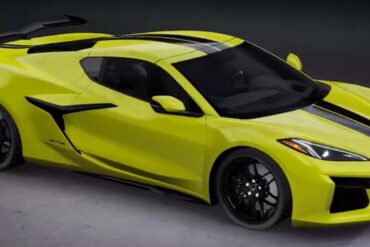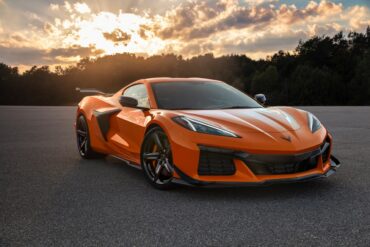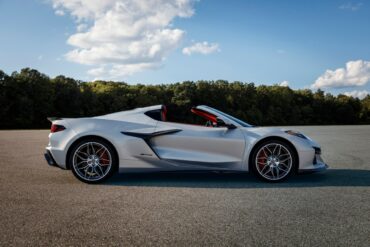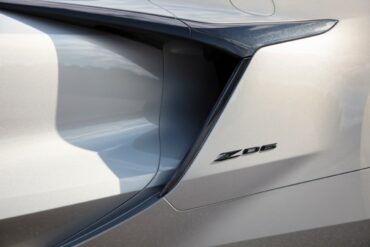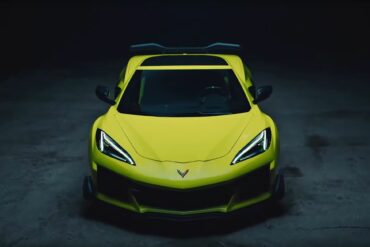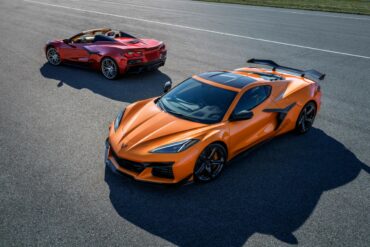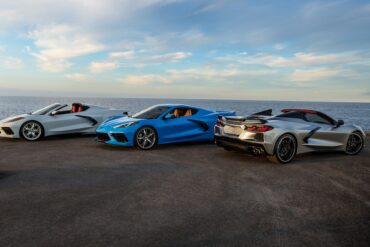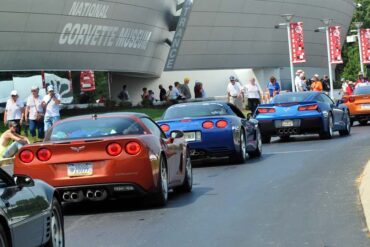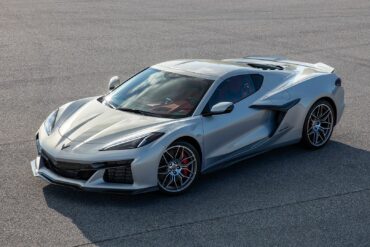Both cars have a rated 430 horsepower engine. Which one do you think will win?...
Special Series Models
At Sebring in 1967, the Corvette L88 made its debut appearance. The L88 package included many competition components which included a M22 transmission, large disc brakes, upgraded suspension and an alumunim head 427. Shortly after the race, the L88 option would be offered on production cars which was a formidable package.
It’s not surprising to see a 660 hp Ferrari 488 GTB getting outmatched by 1000 hp supercharged ZR1 Corvette. But...
Power and blinding acceleration were the driving forces behind the development of the 1968-1969 Chevrolet Corvette 427. Only 390 1969 Corvettes were built with the famous L89 427 and while the L89 option was chosen 624 times in 1968, it is still a rare beast relative to total production. The 427 CI engine was good for 435 HP and a strong 460 lb-ft of torque making it one of the best-accelerating cars of its time.
The 2017 Corvette Z06 was once more offered to consumers who were looking for a car with more power and...
The 2019 Corvette ZR1 was developed with the intent of building a super-car iteration of the Corvette that pushed the...
FOR SALE: A 1,300-Mile 1990 Corvette ZR-1 Coupe! If you were a child of the late seventies, chances are better...
This was one of just a few Corvettes that had a successful racing career. ...
DETROIT (Monday, April 14, 2014) – Chevrolet today introduced one of the most capable drop-tops on the market: the 2015...
The 2017 Chevrolet Corvette Grand Sport Indy 500 Pace Car is the 14th Chevrolet Corvette to become the Indianapolis 500’s...
On January 22-30, at WestWorld of Scottsdale, Barrett-Jackson will be auctioning off one of the much-awaited Corvette as part of...
Two beautiful, low-mileage Corvettes are being offered at Bring A Trailer, a 2008 Chevrolet Corvette Z06 and a 2013 Chevrolet...
Hold on to your wallets as three very interesting Corvettes are being offered by Bring A Trailer. There is the...
The Corvette team decided to one-up the Viper with four extra cylinders, they decided on one of Ryan Falconer’s stunning, all aluminum, 600-cubic-inch, 683hp, 680 lb-ft V-12 racing engines. The biggest challenge was the fact that the all-aluminum V-12 engine was 8.8-inches longer than the production Corvette engine. So the front end of the ZR-1 would have to be stretched 8 inches. This test car was named Conan, after his raw, beastlike charisma.
If it wasn’t already blatantly apparent, we here at CorvSport are very very very very very excited about the 2023 Corvette...
Two beautiful Corvettes are on offer at Bring a Trailer, a 1957 Chevrolet Corvette 283/245 and a modified 2016 Chevrolet...
In 1993 just 448 ZR-1 Corvettes were produced and only 240 of them were 40th Anniversary Edition cars. The 40th Anniversary Package consists of a deep and glossy Ruby Red exterior finish over a matching Ruby Red interior with leather adjustable sport seats. A Corvette with both of these highly desirable packages is rare and special. At the heart of the ZR-1 is the 405-horsepower LT5 V8 engine mated to a 6-speed manual transmission.
The 1969 Chevrolet Corvette Convertible was sold new by Northcutt Chevrolet in Enid, Oklahoma. Through the years, it has spent...
Jay Leno, apart from being a (semi-retired) comedian, is what many of us aspire to be when we grow old...
VIDEO: Experience the First 2023 Z06 Corvette Test Drive! You’ve seen its unveiling. You’ve heard its incredible exhaust notes. You’ve...
We Look At All the Features Available in the 2023 Z06 Corvette Configurator As We Design Our Own…and You Can...
Now that the 2023 Corvette C8 Z06’s 5.5L LT6 engine has been revealed with its specifications, it has already been...
The 2023 Corvette Z06 Has Been Revealed…and IT IS SPECTACULAR! On October 26, 2021, shortly after 11:00AM CST, Chevrolet introduced...
There really isn’t much more to say, really. Here is the full 45 minute reveal from when it was streamed...
First of all, if you haven’t watched the 2023 Corvette C8 Z06 reveal video, you can watch it below: While...
With the reveal of the new 2023 C8 Z06 earlier today, Corvette enthusiasts around the world are buzzing with confirmed...
Recently, there have been a lot of buzz on the newly revealed Chevrolet Corvette C8 Convertible and rightly so. It...
Rumors regarding the Corvette E-Ray has been around for a very long time. As early as 2015, it has been...
Are Some Corvettes Better Than Others? Since its introduction in 1953, the Chevy Corvette has been recognized as one of...
GM Has Unveiled Their Latest Iteration of the C8 Corvette Stingray – Introducing the 2023 Corvette Z06! On August 20,...


